| Organic Seeds | Edible Plants | Organic Pest Controls | Books | Tools, Propagation & Fertilisers | Sprouting & Microgreens | Poultry Supplies | Specials & Gift Ideas |

Top

We will send an email to this address*
when is next available
* we will use this email address only for this notification and then we will delete it.
 Home
Home
Green Harvest Organic Gardening Supplies is permanently closed as of 5pm on 1-11-2023.
We will not be taking orders by this website, in person, by phone or email. Our display garden and retail shop are closed forever.
Read more...
Phone:07 54357000
Phone calls will only be responded to sporadically and only in reference to orders placed prior to 2-11-2023. All the useful growing and organic pest management research and resources are available on this website for a while still.
|
|
|
Preparing your planting area ahead of time is very worthwhile - for detailed growing
notes, click the link next to each plant.
List of all plant growing information |
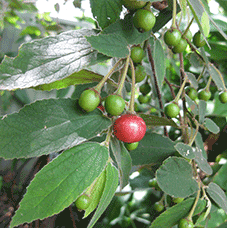 Panama Berry
UT
Panama Berry
UTMuntingia calabura Not to Norfolk Island, NT, SA, TAS or WA Syn. strawberry tree, calabur, Jamaica cherry. Panama Berry is an attractive, small tree, 5 - 10 metre high, with weeping branches and small white flowers. It is fast growing and fruits in the first year. Flowers and fruit appear over a long period so provide a sweet snack for the gardener. The small, sweet, red berries have been described as caramel flavoured and can be eaten fresh or used for jams. It can also be grown as a large container plant and responds well to pruning. It is drought hardy and pest resistant. It is an excellent choice as a shade tree for kid's play areas. Provided as tubestock. GP207 GP208Save $1.90 |
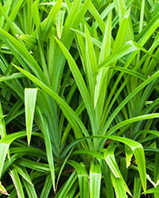 Pandan
H
UT
Rare
Pandan
H
UT
RarePandanus amaryllifolius Not to Norfolk Island, NT, SA, TAS or WA Syn. screwpine pandanus, ketaki, pandan wangi, bai tooey. A strappy leafed tropical plant widely grown for its use in Asian cooking. Growing 1 - 2 metres high with bright green leaves and aerial roots. It really is a tropical plant and needs a warm, humid microclimate created, to grow it further south than northern NSW. Even in Maleny on the Sunshine Coast of Queensland it is not really warm enough to grow it outside. It likes a lot of water and will grow as a marginal plant on the edge of a dam or pond. In cooking it is used in rice dishes or tied in a bundle and cooked with food. Provided as tubestock. GP174 |
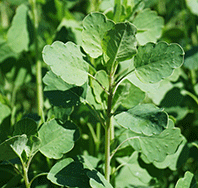 Papalo
UT
Papalo
UTPorophyllum ruderale Not to Norfolk Island, NT, SA, TAS, VIC or WA Syn. papaloquelite, Bolivian coriander, yerba porosa. Papalo is an annual plant with a flavour profile similar to coriander; the taste has been described as 'halfway between rocket and coriander'. It predates the use of coriander in Mexican and South American cuisine by thousands of years and is commonly used in salsas. The leaves should be harvested when young and tender, when the flavour is milder. It has a stronger flavour than coriander so much less is needed. It likes to grow from partial shade to full sun and reaches a height of 1 m by 90 cm across. It copes well with hot weather and may self-sow. The flowers are attractive to pollinators and good bugs. Provided in mini pots. GP214 GP193Save $1.90 |
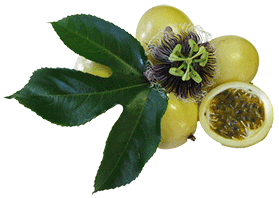
 Passionfruit 'Panama Gold'
UT
Passionfruit 'Panama Gold'
UTPassiflora flavicarpa x Passiflora edulis Not to Norfolk Island, NT, SA, TAS or WA 'Panama Gold' produces very large, deep golden fruit with a delicious sweet, tangy flavour. It is a vigorous climbing plant with lush, deep green attractive leaves and showy purple and white flowers. It is self-pollinating and produces prolifically. Grow on a strong trellis for support. Does well in subtropical and tropical areas. In temperate areas requires a warm, sheltered position and may lose its leaves during winter. Provided as tubestock. GP157 GP158Save $1.90 |
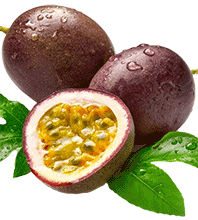 Passionfruit 'Panama Red'
UT
Passionfruit 'Panama Red'
UTPassiflora flavicarpa x Passiflora edulis Not to Norfolk Island, NT, SA, TAS or WA 'Panama Red' produces very large, red skinned fruit with a delicious sweet, tangy flavour. It is a vigorous climbing plant with lush, deep-green attractive leaves and showy purple and white flowers. It is self-pollinating and produces prolifically. Grow on a strong trellis for support. Does well in subtropical and tropical areas. In temperate areas requires a warm, sheltered position and may lose its leaves during winter. Provided as tubestock. GP198 GP199Save $1.90 |

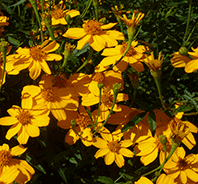 Passionfruit Marigold
UT
Passionfruit Marigold
UTTagetes lemmonii Not to Norfolk Island, NT, SA, TAS or WA Syn. tree marigold, mountain marigold, lemmon's marigold, Mexican bush marigold, tangerine marigold, copper canyon daisy. Passionfruit Marigold is a shrubby perennial with rich, golden yellow flowers blooming from autumn to spring. The leaves have a strong fragrance described as 'fruit salad' or 'passionfruit'. Most people enjoy the scent but there are a few who may dislike it. It is native to North America and used extensively in drier area gardens for its drought tolerance. It is a tough, pest-resistant plant that grows vigorously to 1.5 m high by 2.5 m wide. It prefers a well-drained soil and sunny position and will tolerate light frosts. The leaves and flowers can be dried for pot-pourri and sachets to repel pest insects in the home. Like all Tagetes spp. when growing in the garden the roots will help to repel soil nematodes. When it is pruned the leaves can be spread around the garden as a pest repellent mulch. It needs to be pruned annually to re-invigorate it. Provided as tubestock. GP194 GP195Save $1.90 |
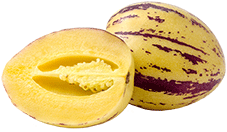 Pepino 'Kendall Gold'
UT
Pepino 'Kendall Gold'
UTSolanum muricatum Not to Norfolk Island, NT, SA, TAS or WA Syn. pepino dulce. The pepino is a native of the Andes in South America. It is in the tomato family and grows as a small sprawling bush 80 - 100 cm tall. 'Kendall Gold' is an improved selection that produces yellow fruit striped with purple that has a sweet, delicate, mild flavour, similar to a melon. It does best in warm climates but will tolerate light frost. It is suited to fertile, moist soils in full sun although it will grow in partial shade it will be less fruitful. It is easy to strike from cuttings; new bushes should be planted every few years as it bears less with age. The sprawling habit makes it useful as a groundcover but growing it on a trellis protects the fruit from attack by slugs and snails and from rotting from contact with the soil. Suitable for warm temperate and subtropical areas. Provided as tubestock. GP182 GP183Save $1.90 |
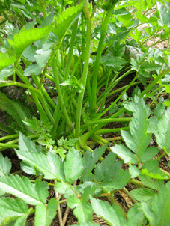 Peruvian Parsnip
UT
Peruvian Parsnip
UTArracacia xanthorrhiza Not to Norfolk Island, NT, SA, TAS or WA Syn. Andean parsnip, apio criollo, arracacha, arrecate. A perennial root vegetable, native to the Andes in South America, is suited to many areas of Australia. It produces large creamy-white roots similar in size to a carrot with a delicious flavour. The tops can be used in a similar way to celery. Suitable for warm temperate to subtropical areas in well-drained soils. More info on growing Peruvian parsnip... Provided as tubestock. GP100 |
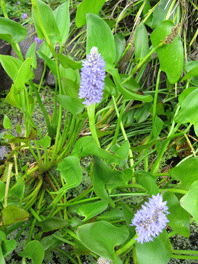 Pickerel Rush
UT
Pickerel Rush
UTPontederia cordata Not to Norfolk Island, NT, TAS or WA A hardy, easily grown perennial pond plant with glossy green leaves, spikes of attractive blue flowers in summer. Seeds are edible, a bit like puffed brown rice. Plant in full sun, in up to 200 mm depth of water. More info on edible waterplants... Provided as a rootsett per pack. GP118 GP185 |
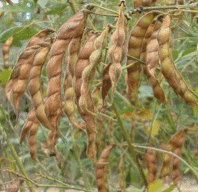
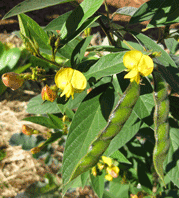 Pigeon Pea
UT
Pigeon Pea
UTCajanus cajan Not to Norfolk Island, NT, SA, TAS or WA Pigeon Pea is an excellent chicken forage for warmer areas, providing high protein seeds, edible leafy greens and shelter. It is a perennial, nitrogen-fixing, drought tolerant shrub to 2 - 3 m. It is also useful for on-site mulch production and is an excellent animal forage. It is an important food plant in India; the seeds are 25% protein and can be eaten fresh or as split dried peas. The dried seeds are used for dhal in India and contain 5 times more Vitamin A and C than green peas. The leaves and young shoots can be eaten cooked, they are fibrous and have a strong spicy odour. Sow spring and summer into warm soil; autumn in frost-free areas only. Suitable for (warm) temperate, subtropical and tropical areas. More information on pigeon pea here. Provided as tubestock. GP150 GP151Save $1.90 Are you looking for Pigeon Pea seed? |
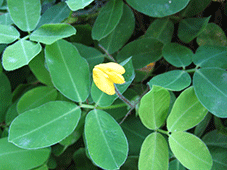 Pinto Peanut
UT
Pinto Peanut
UTArachis pintoi Not to Norfolk Island, NT, SA, TAS or WA Pinto Peanut is an excellent legume groundcover for orchards, it forms a thick, luxuriant mat 20 - 30 cm deep, with attractive yellow pea flowers; it suits frost-free areas and is moderately tolerant of shade. It tolerates competition from grass and effectively excludes broadleaf weeds, fixes nitrogen and tolerates low mowing. It is best left unmown in late summer to early spring in the first year. This allows sufficient depth of groundcover to prevent weed invasion in the dormant season. It protects the soil surface from erosion and improves soil structure. It does best in subtropical and tropical areas. More info on growing Pinto Peanut. Provided in mini pots. GP152 GP165Save $1.90 |
 Poor Man's Bean
Rare
H
Poor Man's Bean
Rare
H
 UT
UTLablab purpureus syn. Dolichos lablab Not to Norfolk Island, NT, SA, TAS, VIC or WA Syn. Tongan bean, bonavist pea, Indian bean, bataw. Poor Man's Bean is an old Australian heirloom and was once found on many backyard fences in QLD. It is not forage lablab, which has much coarser pods. The deep pink flowers are followed by pale green pods, resembling snow peas in shape when young. It is a short-lived perennial and will live for 2 - 3 years. It is hardy and good at coping with wet, humid conditions. It is grown for its young, tender pods, edible leaves and flowers and is a popular vegetable in Southeast Asian and African cooking. The mature pods and dried beans contain toxins so should be well-cooked with a change of cooking water. It climbs vigorously to 2 - 3 metres and requires a strong trellis. It is best suited to tropical and subtropical areas. It tolerates a wide soil range but prefers fertile, well-drained soil. Provided in mini pots. GP162 GP180Save $1.90 Available as seed... |
|
Potato varieties can be either determinate or indeterminate, just as tomato plants are. The big difference between the two types is whether you need to mound the soil or not. Having said that, the majority of types available to the home gardener are indeterminate and so do need mounding. Determinate Varieties These types produce tubers in one layer just below the soil surface and so do not require mounding of the soil around them. They are usually less productive than indeterminate types but do produce spuds earlier, in about 70 to 90 days. If you live in a very cold climate these are the best choice. Plant determinate seed potatoes about 10 cm deep and mulch well. Available: 'Kipfler', 'Purple Congo'. Indeterminate Varieties These grow in multiple layers, so it is important to keep mounding soil around the plants, to give you the best yield. Indeterminate potatoes can take longer to produce a crop, about 80 to 120 days. Best preparation is to dig a shallow 20 cm x 20 cm trench, then plant indeterminate seed potatoes about 10 cm deep and progressively fill in the trench with the soil as they grow. Only mound spuds to a maximum of 30 cm above the original soil level. These are also the best choice if you are growing spuds in a tyre tower or potato bag. Indeterminate types include: 'Desiree', 'Dutch Cream' 'Sebago'. |
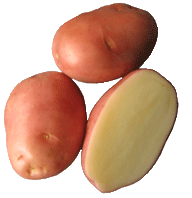 Potatoes 'Desiree'
Potatoes 'Desiree'Solanum spp. Not to Norfolk Island, NT, SA, TAS or WA 'Desiree' is a moderately large, oval Dutch potato with rosy pink skin and scrumptious yellow flesh perfect for baking, boiling, wedges or mashing. It is drought resistant. Indeterminate type. More info on growing spuds... GP102 |
 Potatoes 'Dutch Cream'
Potatoes 'Dutch Cream'Solanum spp. Not to Norfolk Island, NT, SA, TAS or WA Oval tuber with a yellow skin and rich yellow, waxy flesh; holds its shape when cooked and is excellent mashed, only needing a little salt. Indeterminate type. More info on growing spuds... GP108 |
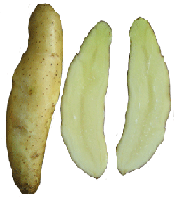 Potatoes 'Kipfler'
Potatoes 'Kipfler'Solanum spp. Not to Norfolk Island, NT, SA, TAS or WA German variety with long banana-shaped tubers, yellow skin and creamy-coloured flesh with a nutty flavour. Good for roasting, steaming, boiling and excellent for salads. Highly productive, produces large number of tubers. Determinate type. More info on growing spuds... GP110 |
 Potatoes 'Purple Congo'
Potatoes 'Purple Congo'Solanum spp. Not to Norfolk Island, NT, SA, TAS or WA Heirloom potato bred before 1895, easily the hardiest potato we have ever grown. It is a small cylindrical waxy potato with unusual purple-black, shiny skin and purple flesh. Colour is retained when cooked, making great looking chips and potato salad. Also good for mashing, steaming, gnocchi but not roasting. We find them sensational steamed and served with satay sauce! Determinate type. More info on growing spuds... GP149 |
 Potatoes 'Sebago'
Potatoes 'Sebago'Solanum spp. Not to Norfolk Island, NT, SA, TAS or WA 'Sebago' potatoes were introduced in the USA in 1938. It produces oval tubers with shallow eyes and smooth, white skin. Good for boiling and baking, with no darkening after cooking. Good yield. Indeterminate type. More info on growing spuds... GP111 |
|
Determinate Varieties
These types produce tubers in one layer just below the soil surface and so do not require mounding of the soil around them. They are usually less productive than indeterminate types but do produce spuds earlier, in about 70 to 90 days. If you live in a very cold climate these are the best choice. Plant determinate seed potatoes about 10 cm deep and mulch well. Available: 'Kennebec', 'Kipfler', 'Purple Congo'. Indeterminate Varieties These grow in multiple layers, so it is important to keep mounding soil around the plants, to give you the best yield. Indeterminate potatoes can take longer to produce a crop, about 80 to 120 days. Best preparation is to dig a shallow 20 cm x 20 cm trench, then plant indeterminate seed potatoes about 10 cm deep and progressively fill in the trench with the soil as they grow. Only mound spuds to a maximum of 30 cm above the original soil level. These are also the best choice if you are growing spuds in a tyre tower or potato bag. Indeterminate types include: 'Desiree', 'Dutch Cream', 'Nicola', 'Pontiac', 'Sebago'. |
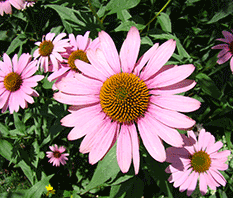 Purple Coneflower
Purple Coneflower

 UT
UTEchinacea purpurea Not to Norfolk Island, NT, SA, TAS or WA Syn. echinacea. Purple Coneflower is a hardy herbaceous perennial to 80 cm high with long-lasting purplish pink flowers in summer. It is a native North American wildflower that is highly attractive to butterflies. It is drought tolerant and likes well-drained soil in full sun but will grow in very light shade. It is the source of the highly regarded medicinal extract used to boost the immune system, the leaves can also be used as a herbal tea. Provided in mini pots. GP204 GP205Save $1.90 Available as seed... |
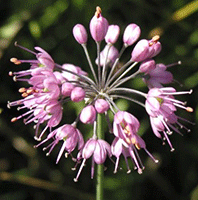 Rakkyo Onion
UT
Rakkyo Onion
UTAllium chinense Not to Norfolk Island, NT, SA, TAS or WA Syn. Chinese onion, oriental onion, jiao tou, cu kieu. Rakkyo is a hardy multiplying onion native to China. It grows as a dense evergreen clump with pretty, deep rose-pink flowers. It is tolerant of a range of growing conditions. A staple vegetable in cuisines ranging from Japan to China to Thailand to Vietnam to Indonesia. Rakkyo in just a few seasons becomes hugely productive. Suitable for most areas of Australia. More info on growing rakkyo onion... Provided as tubestock GR115 GR116Save $1.90 |
|
Raspberry
Rubus idaeus If you live in an area that will grow raspberries then why wouldn't you? Raspberries are a luscious fruit for eating fresh or preparing as a wonderful dessert. Raspberries are a berry fruit that grow as a herbaceous perennial. The fruit are produced on prickly stems (canes) on a shallow-rooted bush. Raspberries are grouped into two types, floricanes and primocanes. Summer Fruiting varieties bear fruit on floricanes and include cultivars such as 'Willamette', 'Everbearer', 'Nootka', 'Chilcotin' and 'Tulameen'. These types of raspberries are better suited to cooler areas with low humidity. Fruit is produced from late November to early January on canes that grew the year before. Autumn Fruiting varieties such as 'Heritage' and 'Autumn Bliss' produce fruit on current season's canes in autumn and are tolerant of a warmer climate. Raspberries require a sunny position, sheltered from hot winds, but with good air drainage to reduce fungal problems. A deep, well-drained soil that is slightly acid, rich in organic is preferred. Keep the plants well mulched to prevent roots drying out and competing weed growth. Spray regularly with seaweed fertiliser to strengthen the plant and reduce fungal problems. A trellis should be erected at the time of planting to keep the canes and fruit off the ground. When tying plants to the trellis an open well-spaced arrangement will reduce fungal problems. Keep in mind bird and possum protection as absolutely everything loves raspberries! |
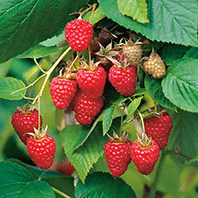 Raspberry 'Tulameen'
Raspberry 'Tulameen'
 UT
UTRubus idaeus Not to Norfolk Island NT, SA, TAS or WA Raspberry 'Tulameen' has luscious, large, conical fruit with an excellent flavour and it is a heavy cropper over an exceptionally long period. It is a Summer fruiting variety and requires around 450 chilling hours or greater. It produces on second-year wood (floricanes). The canes grow to 1.5 m tall and can be tied to a trellis or tripod and are relatively spine-free. 'Tulameen' has good disease resistance. Provided as tubestock. GR144 GR145Save $1.90 |
|
Rhubarb
tolerates partial shade and prefers a rich, well-drained soil. It is suitable
for VIC, NSW and cooler areas of QLD. In humid areas, plant your rhubarb in a planter
bag and move under an eave during the wet season. Contrary to popular belief 'red' is not a sign
of sweetness in rhubarb, green stems are not only perfectly edible but can also be sweeter than red stems.
|
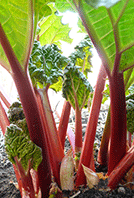 Rhubarb 'Red Dragon'
UT
Rhubarb 'Red Dragon'
UTNot to Norfolk Island, NT, TAS or WA A strong growing variety producing a very even crown; luscious long stems of very large, dark red, sweet stalks. More info on growing rhubarb... Provided as a crown per pack. GR119 min. 1 crown (1 pack) GR133 |
 Rhubarb 'Victoria'
UT
Rhubarb 'Victoria'
UTRheum rhabarbarum Not to Norfolk Island, NT, SA, TAS or WA 'Victoria' is noticeably sweeter and milder than other rhubarb. It produces prolific yields of thick, tender stalks with a rosy-red sheen that gradually turn to pink and then to green toward the leaf tip. More info on growing rhubarb... Rhubarb seeds are available. Here's a link to a blog on: Rhubarb 'Victoria'. |
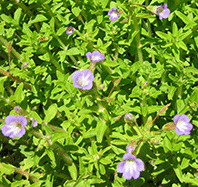 Rice Paddy Herb
UT
Rice Paddy Herb
UTLimnophila aromatica Not to Norfolk Island, NT, SA, TAS or WA Syn. rau om, ngo om, swamp leaf. A low growing, evergreen, tropical herb with pretty pale blue flowers used in Asian and Vietnamese cooking. The fresh stems have a citrusy cumin flavour and are used fresh in soups, curries and as a garnish. It needs a frost-free position in partial shade with moist soil. It will also grow as an edge or bog plant next to a pond. In cooler areas it can be grown in pots and will benefit in winter from being completely covered, pot and all, with a clear plastic bag, tied at the top. Finish by punching a few air holes. This arrangement creates a miniature greenhouse to keep this plant happy through colder periods. Provided in mini pots. GR122 GR123Save $1.90 |
 Rock Samphire
UT
Rock Samphire
UTCrithmum maritimum Not to Norfolk Island, NT, SA, TAS or WA Syn. sea fennel. Rock Samphire is an aromatic perennial herb native to European coastlines. It is an attractive low growing shrub with fleshy, green-blue leaves. It is particularly drought tolerant and copes with soils with high salinity. It grows as a low mound to 60 cm high with a spread of 0.5 - 1 m. It needs to grow in full sun, in a well-drained soil, as it dislikes wet feet. The leaves are traditionally boiled and then pickled. The young tender leaves can be used as a garnish. Provided as tubestock. GR138 GR139Save $1.90 |
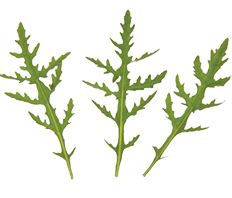 Rocket - Wild 'Sylvetta'
Rocket - Wild 'Sylvetta'
 UT
UTDiplotaxis tenuifolia Not to Norfolk Island, NT, SA, TAS, VIC or WA Syn. roquette, selvatica. Wild Rocket is a completely different plant to standard rocket. It is a perennial salad plant with a piquant, peppery flavour. It has dark green, deeply indented leaves with small, yellow, edible flowers. The plant tends to sprawl, so needs a bit of room; it may self sow. It is more heat and cold tolerant than standard rocket so will produce a leaf harvest over the summer months. It is a tasty addition to salads and can also be added to stir-fries. It prefers a moderate to rich loamy soil. It will grow from full sun to partial shade. Keeping the soil evenly moist will ensure tender leaves that are not too spicy. Provided in mini pots. GW137 GW138Save $1.90 Available as seed... |
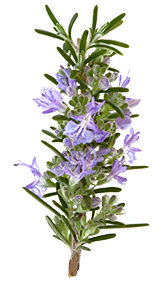 Rosemary 'Savor'
Rosemary 'Savor'
 UT
UTRosmarinus officinalis Not to Norfolk Island, NT, SA, TAS or WA Rosemary is a hardy perennial herb that every gardener should have and it can be grown in most climates except for the very tropical. 'Savor' is a compact shrub with attractive blue flowers and aromatic grey-green, glossy, leaves. It grows upright to 50 cm high with a spread of 50 cm and is a great bee forage. This variety has been specially selected for its superior flavour and scent and succulent foliage. It does best in full sun with good drainage, is frost tolerant and requires little water once established. It does well in temperate and Mediterranean climate zones. In a subtropical area, try growing it in a large terracotta pot and moving it under the eaves during the wet season or just plant it in a very well-drained spot. It can be clipped into a beautiful hedge or will grow well in pots. Use it in Italian cuisine; as a medicinal herb to improve memory; as a therapeutic oil or as a useful herb for poultry nest boxes. Provided in mini pots. GR130 GR131Save $1.90 |
|
Green Harvest specialises in plants which are:
|
Not to NORFOLK ISLAND, NT, SA, TAS or WA
SORRY but due to quarantine restrictions between Australian States no plants at all can be ordered by residents of Norfolk Island, Tasmania and Western Australia. These restrictions are very important as they prevent the spread of plant pests and diseases. No potatoes, garlic, shallots, strawberries or tubestock can be sent to South Australia. No tubestock can be sent to Northern Territory.
SORRY but due to quarantine restrictions between Australian States no plants at all can be ordered by residents of Norfolk Island, Tasmania and Western Australia. These restrictions are very important as they prevent the spread of plant pests and diseases. No potatoes, garlic, shallots, strawberries or tubestock can be sent to South Australia. No tubestock can be sent to Northern Territory.
 Home
Home
Green Harvest Organic Gardening Supplies is permanently closed as of 5pm on 1-11-2023.
We will not be taking orders by this website, in person, by phone or email. Our display garden and retail shop are closed forever.
Read more...
Phone:07 54357000
Phone calls will only be responded to sporadically and only in reference to orders placed prior to 2-11-2023. All the useful growing and organic pest management research and resources are available on this website for a while still.
No liability will be accepted by Green Harvest, its owners or employees as to the accuracy of any information. No responsibility will be taken for damage to property or persons due to information given about a product or technique. No responsibility will be taken for the loss of a crop or income due to information given about a product or technique.
 Shopping here is private and secure.
Shopping here is private and secure.
Copyright © 2001 - 2024 Green Harvest Organic Gardening Supplies
No part of this website may be reproduced without permission of the owner
